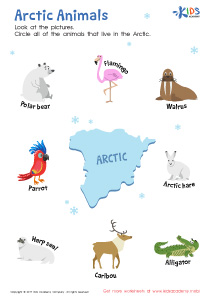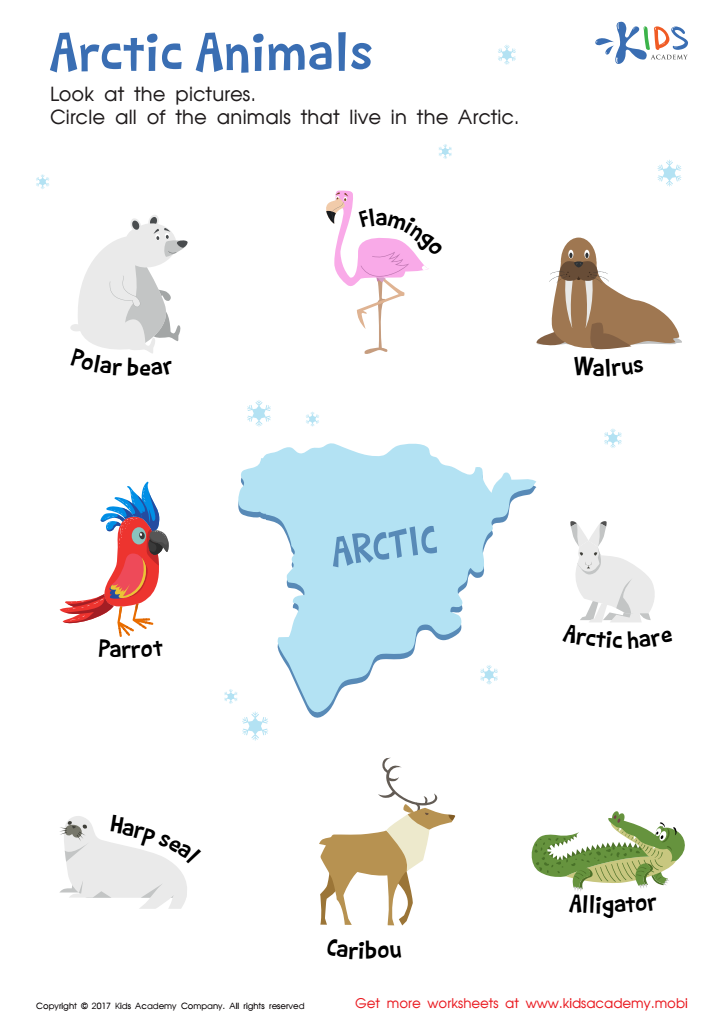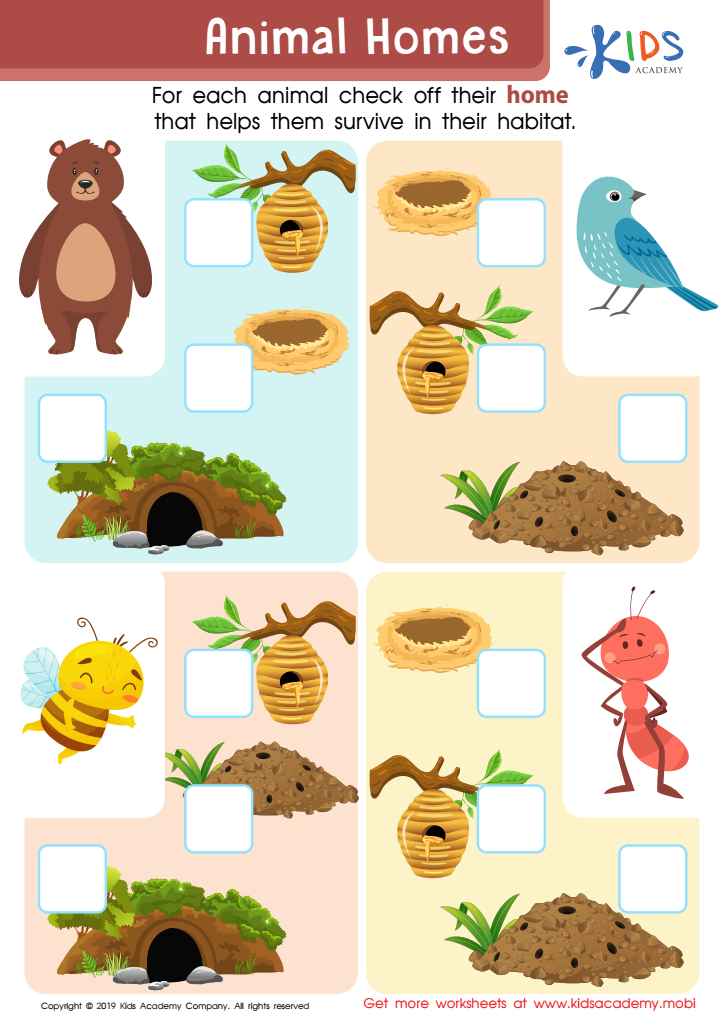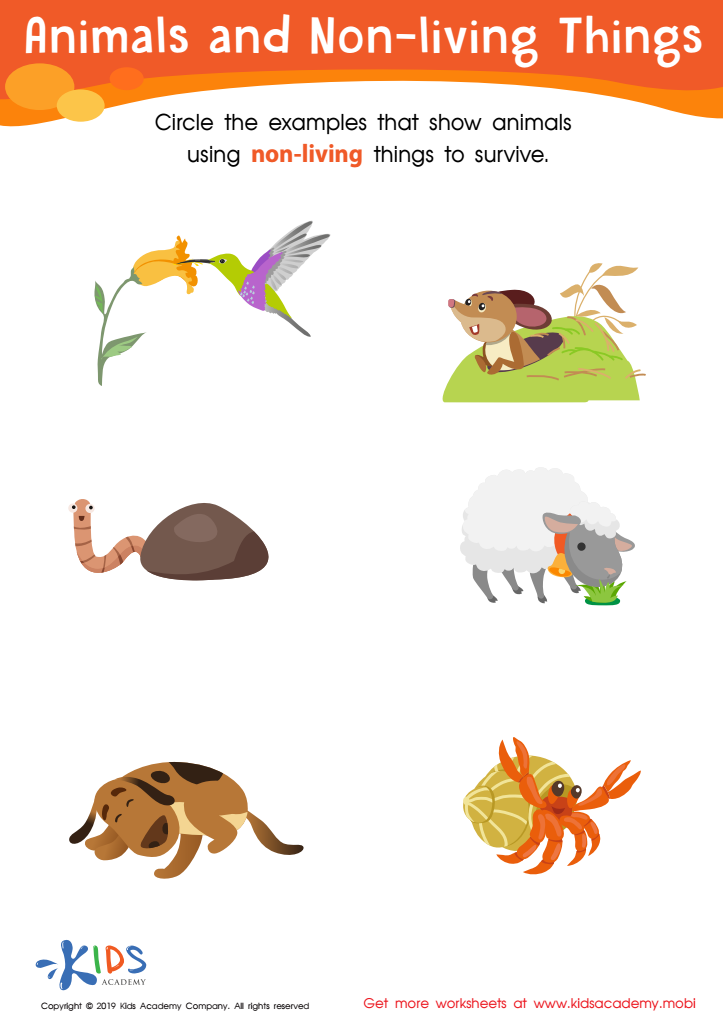Animal Habitats - Lesson for Kindergarten, Chapter - Organisms
In the "Animal Habitats" lesson, designed for Kindergarten students within the Organisms chapter of their Science unit, young learners will embark on an exciting exploration of the various environments animals call home. Through engaging activities including the "Penguins," "Arctic Animals Worksheet," "Animal Homes Worksheet," and "Animals and Non-Living Things Worksheet," students will gain a foundational understanding of how different animals adapt to their surroundings for survival.
By studying penguins and other arctic animals, children will learn about the harsh conditions of polar habitats and the unique adaptations animals have developed to thrive therein. The "Animal Homes Worksheet" will broaden their knowledge by introducing them to a variety of animal homes, from burrows and nests to dens, highlighting the diversity of living environments across species. Furthermore, the "Animals and Non-Living Things Worksheet" will help distinguish between living organisms and their non-living surroundings, enhancing their comprehension of ecosystems.
This lesson is crucial for young students as it fosters an early appreciation and respect for wildlife and the environment. Understanding animal habitats is foundational in developing empathy for living things and recognizing the importance of conservation efforts.




-
Activity 1 / Penguins
-
Activity 2 / Arctic Animals Worksheet
All kids love animals, but does your child know where they live? Step up your child’s science knowledge by teaching him where in the world animals live. This arctic animals worksheet will help your child learn to categorize some favorite animals, while teaching vocabulary for new animals, as well.
Why you’ll love this worksheet:
• It reinforces important classification skills
• You can use it to discuss the habitat of these fascinating animals
• It introduces animals that may be new to your child, like the arctic hare.
Use this worksheet to expand your child’s horizons; talk about the arctic, its climate, and how these animals live, which makes them very different from other animals. When you’re finished, ask your child where the other animals on the page live to keep the conversation going! -
Activity 3 / Animal Homes Worksheet
Your students come to school every day to learn, and while they are in school, it is your duty as their teacher to protect, direct, and guide them. However, after school closes, they head back each to their respective homes. Ask your kindergartners if they know what a home means, and why there is special to them. Then, teach them with this worksheet that not only people, but animals also have homes. Look at the pictures shown, and help your students check off the home for each animal living in its habitat.
-
Activity 4 / Animals and Non-Living Things Worksheet
People eat food, and animals eat food too. However, we all need more than just food to survive. For example, we need shelter to keep ourselves safe and cozy, clothing to keep our bodies warm and dry, and water to quench our thirst. Ask your kids if they can name some more things we need to survive. Now, show your kids how some animals use non-living things to also survive. Identify the objects in the worksheet, and then circle the examples showing animals using non-living things to survive.



